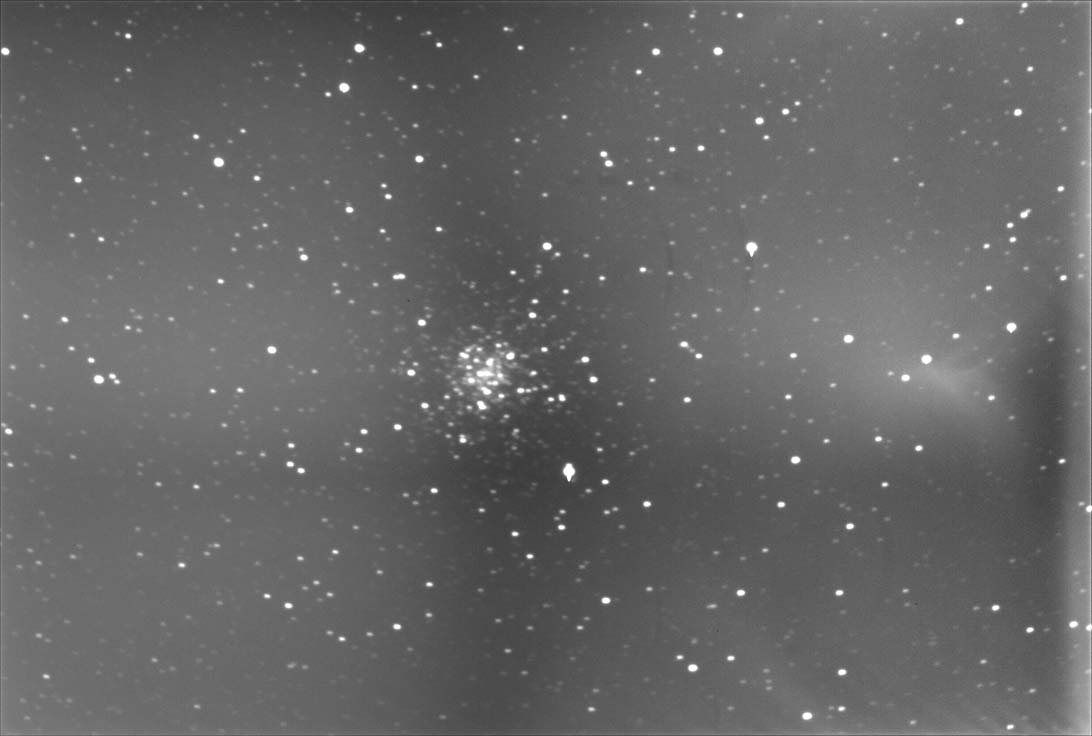
Cal Poly 18 Bulletin 04
2011-10-18: Software/Hardware
The control computer for the Cal Poly 18 arrived. It is an HP h8-1070 computer with an i7-2600 (Sandy Beach) quad-core CPU running at 3.8 GHz, 8 GB PC3-10600 RAM, a 160 GB SATA-3G SSD, and a 1 TB 7200 rpm SATA 3GB/sec HDD. This is a fast machine to facilitate software development and speedy processing of large numbers of images. The OS is Win 7/64 SP1 Home Premium, upgradable at any time to Pro if the need arises.
ASCOM 6, SciTech 56Y, Framework 1.1 and 4.0, C#2010.NET and VB2010.NET have been installed on the computer.
The Feather Touch focuser (FTF2015BCR) with flat mounting base (BA20FL) arrived and has been installed on the telescope.
The ten optoschmidt digital slot sensors (Digikey part # 480-1945-ND) arrived. Six of these are to be used as CW/CCW limit switches and position initialization switches.
We fabricated aluminum carriers for six optical switches and built one of the two required cable assemblies for the switches.
To reduce the stray light problems encountered previously in the TMS parking lot, we taped opaque paper over the open truss and the back of the mirror cell.
Testing on Oct 18 did not go smoothly. We attempted to use beta versions of SciTech compiled under C# for Framework 4 and a new version of PlatesolveXP, on a Win 7 machine, with all of Win 7's peculiarities. In addition, because the limit switches have not been installed, the telescope went out of limits four times, necessitating complete restarts.
Images were taken with Richard's QSI 532ws CCD camera operating at -10 C, and equipped with a TeleVue Paracorr coma corrector. The effective focal length with the Paracorr in place is 2162 mm (85 inches) giving a focal ratio of f/4.73.

The first test images were of M56. When a 200-second exposure showed almost no trailing, we took this 300-second exposure through a blue filter. The stars are somewhat elongated, 5.2 arcseconds FWHM, and there's only a trace of field rotation because we picked an object where the field rotation rate was very small. On the original exposure, the sky backgrounds were: UL=24k, UR=57k, C=27k, LL=23k, LR=50k (talk about gradients: this image had the Mother of All Gradients!) After taking this one, we re-focused.
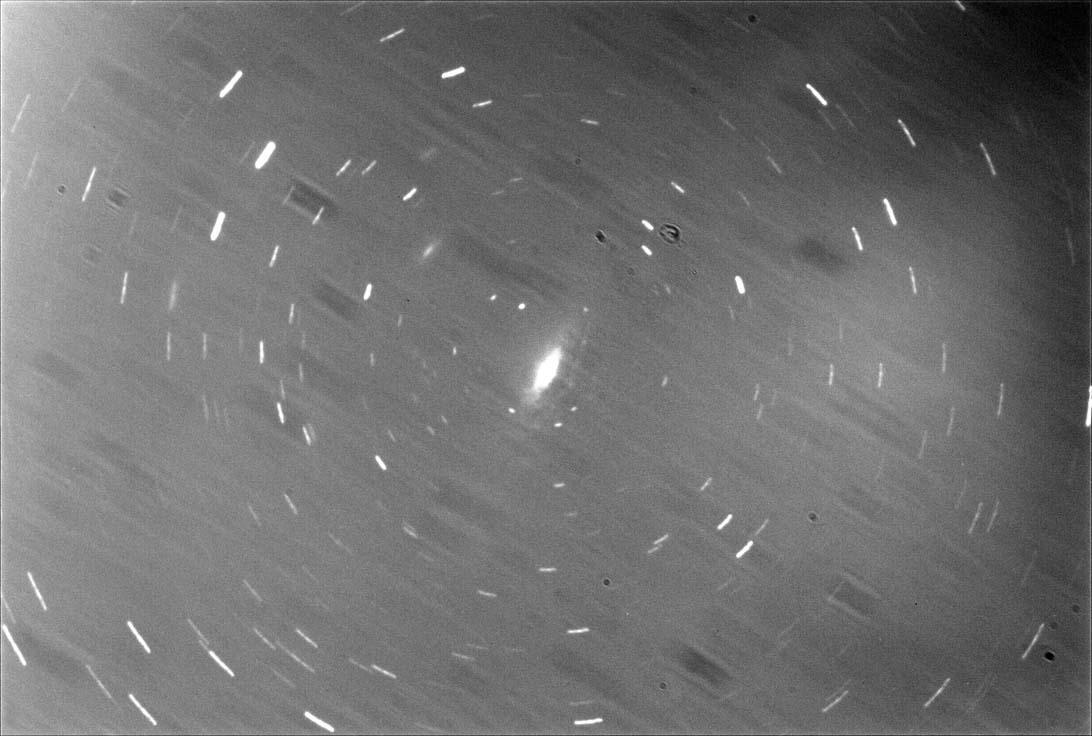
Here's the next image showing field rotation because we did a "what the heck" in a relatively dark part of the sky to see what we got. We used a clear filter. Field rotation here was approximately 3x sidereal, so in 300 seconds effect is pronounced. The smallest star images are nearly perfectly round and 4.0 arcseconds FWHM. The sky backgrounds were much smaller: UL=19k, UR=22k, C=23k, LL=19k, LR=21k. However, there appears to have been some sort of spurious slit illumination causing sharp shadows of dust in the optical system.
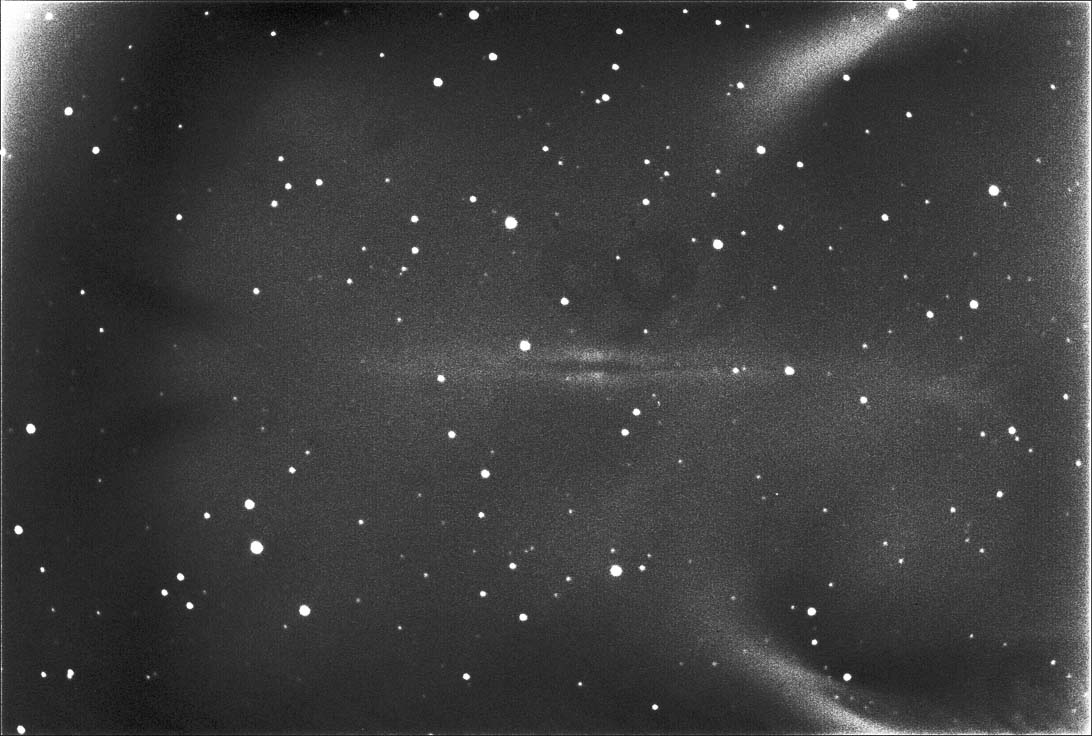
This is the closest we came to getting a "pretty picture" of anything -- in this case, the edge-on spiral galaxy NGC 891. This is a single 300-second clear-filtered exposure. Shortly after this image was taken, the clouds began to move in.
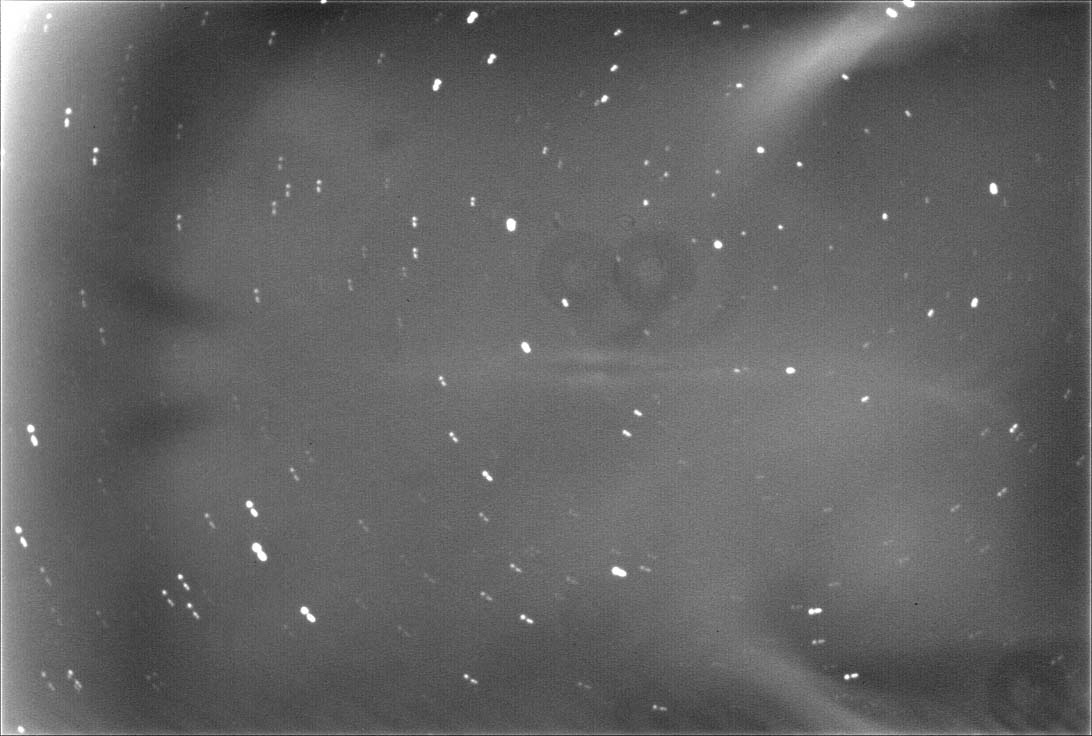
This image is a stack of three 300-second exposures spanning 23 minutes. Over that interval, star images at the center of rotation are 3.7 arcseconds diameter and nearly perfectly round. In other words: the telescope is capable of excellent open-loop sidereal tracking. You can see the sky degrading over the time it took to make the exposures because the star images get smaller. Note both the irregularity and bilateral symmetry of the sky background pattern: baffling will clearly be a necessity even under dark skies.
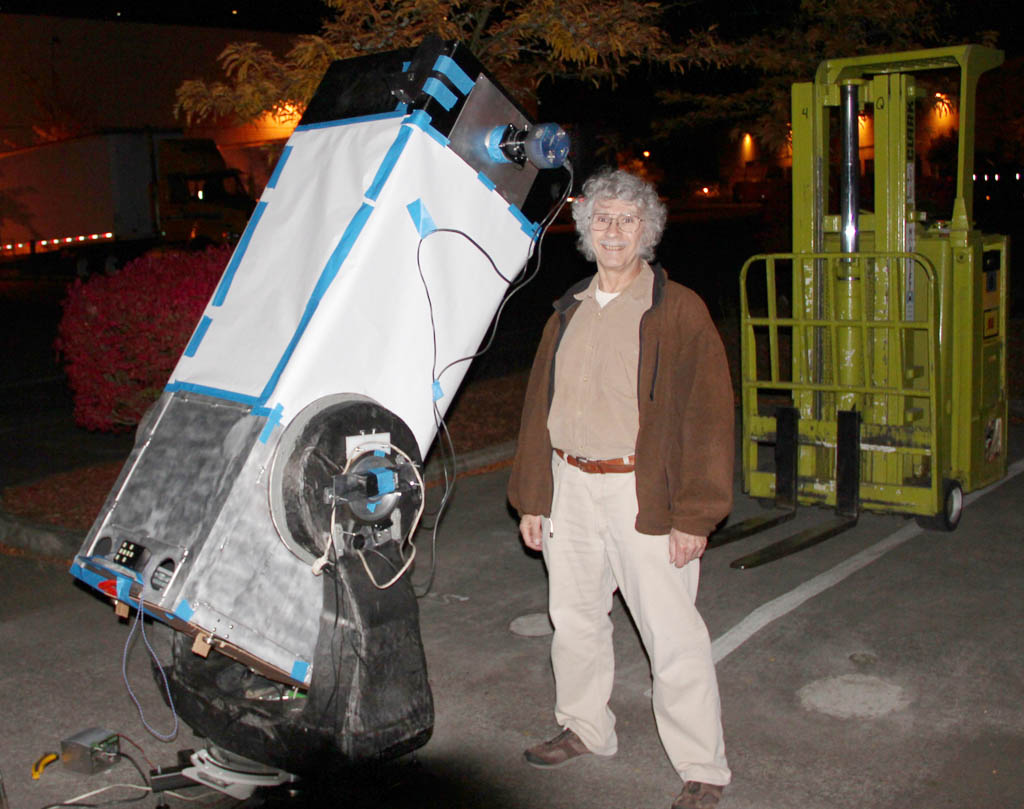
Here's what the telescope looked like during our tests. The paper taped over the truss is white on the outside but black on the inside; it was a temporary measure to reduce the amount of background glare. Despite the paper, our test images showed very high and uneven sky background levels. Dan used the forklift in the background to carry the telescope outside; when it came time to bring it back in, something went wrong with it, so we rolled it back into the shop on a manual pallet lifter.
The current to-do list includes:
We are now close enough to moving the Cal Poly 18 to Alpaca Meadows Observatory in Lyons that Richard will soon purchase materials for a temporary roll-off shelter.
This is Cal Poly Bulletin 04
Main CalPoly Bulletin page or go back to Bulletin 03 or ahead to Bulletin 05
Return to Richard Berry's Home Page